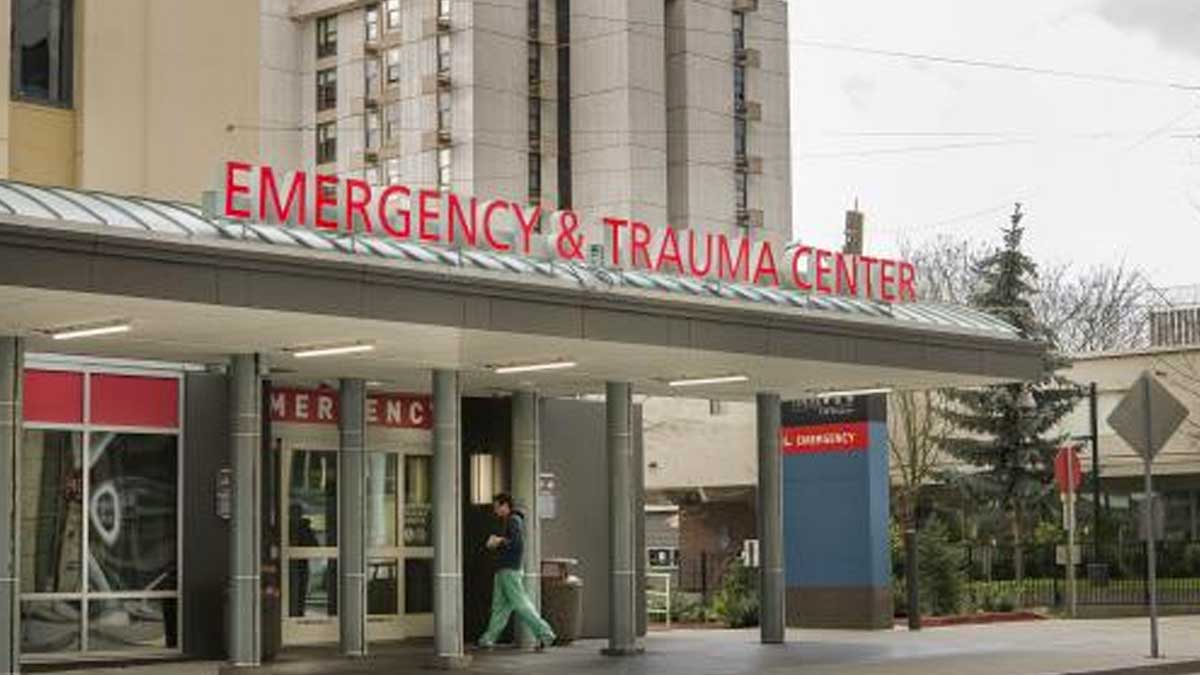Editor’s Note: An early version of this story reported that the first Omicron case detected in the United States has been changed from Dec. 15 to Nov. 15.
[OLYMPIA, Wash.] – (MTN) The Washington State Department of Health (WSDOH) reported the 7 day moving average for new COVID cases had jumped to 1,047.9 over the weekend, obliterating previous records. There were 1,773 people hospitalized with COVID across Washington on Sunday, just shy of the previous record set on Sep. 6, 2021.
With an estimated 242 new COVID-related hospitalizations a day, hospitals in the Evergreen State are on the brink of running out of beds and staff. The I-5 corridor from the Canada border to the Columbia River has the highest case rates in Washington, sparked by several super spreader events in Thurston and Pierce Counties on Dec. 4.
COVID cases have exploded in Eastern Washington, including Spokane, Yakima, and Moses Lake. New cases are forecasted to peak in King County by the end of this week but are expected to continue to surge in Eastern Washington.
The updated IHME forecast model is catastrophic for Washington, projecting 3,189 acute care and 804 ICU patients hospitalized with COVID by Feb. 4. Malcontent News estimates there are 375 staffed acute care and 95 ICU beds available in Washington state, with a coming surge of 2,000 more patients in less than a month.
The Washington State Hospital Association made dire predictions last week. Dr. Francis Riedo, medical director for infection control and prevention at EvergreenHealth in Kirkland, told reporters that the state has “never been closer” to moving to crisis standards of care.
In the same briefing, Dr. John Lynch, medical director of Harborview Medical Center’s infection control program, said that UW Medicine and Harborview Medical Center had more COVID patients under care than at any previous point in the epidemic.
The situation is already dire for Puget Sound hospitals, will more than 97 percent of acute care beds occupied. King County Public Health reported 255 new COVID hospitalizations from Friday to Sunday – a rate of a new hospitalization once every 28 minutes. Hospitalizations in King County have surged 110 percent in a week as new cases skyrocket.
Earlier projections based on case data from South Africa and the United Kingdom estimated that King County hospitalization rates would be by 20% to 30% from the previous Delta wave. Projections reduced the percentage of COVID cases that resulted in hospitalization from 4.7% to 1.14%. Based on data from the first week of January, the rate is almost double – 2.13% – driving hospitalizations to a higher level than previously forecasted.
EvergreenHealth in Kirkland reported 44 hospitalized COVID patients, including one pediatric patient and another four in Monroe. A majority, 70 percent, were hospitalized due to COVID. The remainder is hospitalized for other reasons and co-infected with coronavirus. Five patients are fully vaccinated with boosters, including one in intensive care.
On Monday night, Seattle Children’s Hospital advised parents that its four walk-in urgent care clinics would not accept patients without an appointment due to the unprecedented patient load.
The Washington State Medical Association appealed to Gov. Jay Inslee to declare a crisis and deploy the national guard to support area hospitals. Previous options, including stopping elective surgeries, limiting day procedures, and “boarding” patients in emergency departments, are already being done.
“The time has come to admit that stopping electives and non-urgent care is not enough. We must declare the crisis that our health system is in,” the Jan. 6 letter stated. Cassie Sauer, the Washington State Hospital Association CEO, also signed the letter.
Unlike Idaho, Montana, and Alaska, which had to use crisis standards of care last fall, Washington state will not allow a single facility to move to the emergency protocols. The declaration would come from the state and only occur after all possible options to extend services were exhausted. Under crisis standards of care, patients could be denied care based on need, survival chances, and available resources. Washington developed computer software with Massachusetts and Wisconsin to determine who would receive care. Last week, Oregon announced it was adopting the same computer program.
The physical, mental, and emotional toll of two years of a COVID crisis has decimated the ranks of hospital workers across the country. Omicron is highly contagious and has significant vaccine escape, resulting in hospital workers being sickened. As hospitalizations have surged in the first ten days of January, the number of staffed beds available has slowly declined.
On Thursday, leadership at MultiCare, which runs 11 hospitals across Washington state, reported they had moved to crisis staffing standards in Western Washington. The standard, announced by the United States Centers for Disease Control (CDC) on Dec. 23, can require workers who are sick with COVID to continue to work if necessary to continue to provide patient care.
The Omicron variant arrived in the United States on Nov. 15 and has shattered all previous records for new cases, daily new hospital admissions, and total hospitalizations. One model projects that nation will face another 300,000 hospitalized with COVID by the middle of February, an impossible task for all existing hospital resources.
On Dec. 26, Malcotent News forecasted Washington state hospitals would reach crisis standards of care by Jan. 15, without significant national guard support or FEMA intervention.
